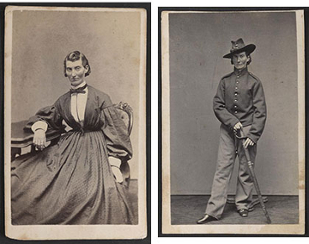History of war includes American women
News
Since the Revolutionary War, long before the repeal of the Direct Combat Exclusion Rule in 2013, American women have served their country in times of war. “It’s hard to determine exactly how many women served,” said Amelia Underwood, who is teaching a course on American Women at War this semester.
“The course is designed to bring to light real experiences of how women have served,” said Underwood, who is an adjunct professor in JMU’s Department of Military Science and Department of Learning, Technology and Leadership Education. A graduate of the United States Military Academy at West Point, she rose to the rank of captain in the U.S. Army. Underwood also is director of leadership development and academic affairs for the Virginia Women’s Institute for Leadership at Mary Baldwin College in Staunton.
Underwood and her 18 students from varying disciplines depend as much as possible on primary sources to understand the contributions of women to the nation’s war efforts and to appreciate their individual sacrifices.
- In the Revolutionary War women served by nursing wounded and ill soldiers, cooking, doing laundry and rolling ammunition. The term “camp followers,” which has been defined as prostitutes, is inaccurate because some women actually followed their husbands into war zones.
- During the American Civil War, women fought in disguise, sometimes fighting shoulder-to-shoulder with their husbands. “Both sides needed soldiers so much that there was not a lot of checking,” Underwood said.
- Beginning in World War I, women’s roles were formalized with the establishment of the nursing corps of the Army and the Navy. By World War II, when the Women’s Army Corps was formed, top military officers, including Gen. George Marshall, saw the value of women in the military.
- In Iraq and Afghanistan, women went on combat patrols before 2013. “We have to build goodwill while we’re rooting out terrorists,” Underwood said. Women are a part of that building because cultural differences often preclude a man interacting with women in Middle Eastern countries.
This semester’s course follows a pilot class in spring 2014. Underwood is planning to teach two sections of American Women at War – one as an Honors class – in spring 2015.
“It is important to have fair coverage of women’s powerful contributions and experiences, both as combatants and non-combatants,” Underwood said. Beyond learning about women’s roles in wartime, she structures the course to make students think about how such service has led to societal changes in gender roles and citizenship.
# # #

